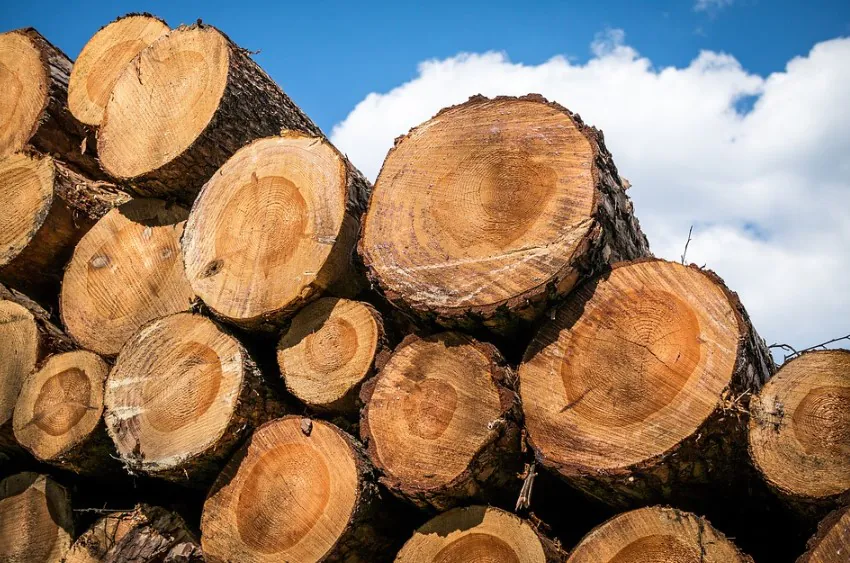The world’s largest wood producing countries, largest wood exporters and importers are contributing immensely to the global timber industry and wood products industry. According the latest statistics reported by the UN’s FAO, the global production and trade of all major wood-based products recorded their highest ever values in 2018, reflecting a steadily growing demand of timber and wood products in the global market. With this growing momentum set to continue through 2020, the world’s largest wood producing countries, largest wood exporters and importers are expected to witness a stronger increase in their production and trading volumes over the near future.
Bizvibe’s smart B2B marketplace solutions help buyers and suppliers in the global timber and wood industry to find and connect with each other, shorten sourcing and purchasing cycles, and maximise profit growth. Join today to see how BizVibe can help your business grow!
Global Timber and Wood Products Industry Figures and Facts
- In 2018, growth in production of the main wood-based product groups ranged from 1 percent (woodbased panels) to 5 percent (industrial roundwood). The fastest growth occurred in the Asia-Pacific, Northern American and European regions, likely due to positive economic growth in these areas.
- In 2018, global industrial roundwood removals grew by 5 percent to reach a record level of 2.03 billion m³. Global trade grew 7 percent to a record high of 138 million m³, of which 43 percent was imported by China. New Zealand overtook the Russian Federation to become the top exporter of industrial roundwood in 2018.
- Wood-based panel and sawnwood production (combined) grew in all five regions around the world in 2018. Global production and trade of both panels and sawnwood increased by 2 percent to a record high of 493 million m³ and 408 million m³ respectively.
- Canada saw a decline in production and exports of sawnwood from 2016 to 2018 due to trade disputes over import duties imposed by the United States of America, its main market. In contrast, the Russian Federation saw continued growth in sawnwood and panel production and exports, in 2018, surpassing Canada to become the largest sawnwood exporter.
- Global production and trade in wood pulp grew by 2 percent to reach record high levels in 2018 (188 million tonnes and 66 million tonnes respectively). Most of the increased supply of wood pulp came from Brazil and Europe. Conversely, global consumption of recovered paper shrunk by 3 percent to 229 million tonnes, mainly due to declined imports in China.
- China, by far the largest producer and consumer of woodbased panels and paper, has grown in importance as both a producer and consumer of forest products, and has recently overtaken a number of other big players in key product groups (e.g. the United States of America in sawnwood production).
- China is also highly significant in international trade of forest products, being the world’s largest importer of industrial roundwood, sawnwood and fibre furnish (pulp and recovered paper), and the largest exporter of wood-based panels. In 2018, China’s imports of industrial roundwood increased by 8 percent. Sawnwood and panel production and consumption continued to grow faster in China than in the rest of the world.
- Wood pellet production has increased dramatically in recent years, mainly owing to demand generated from bioenergy targets set by the European Commission. In 2018, global production grew by 11 percent, reaching 37 million tonnes, of which more than half (24 million tonnes) was traded internationally. Europe and Northern America accounted for most of the global production (55 percent and 28 percent respectively); however, the production share of the AsiaPacific region doubled to 15 percent from 2014 to 2018.
- Europe accounted for 75 percent and Asia-Pacific for another 18 percent of global pellet consumption in 2018. Imports of wood pellets in Asia surged by 51 percent in 2018. Imports of wood pellets increased in Japan and, in 2016, the Republic of Korea became the third largest wood pellet importer, driving up wood pellet production in Viet Nam, Malaysia, Indonesia and Thailand.
Source: FAO
Largest Wood Producing Countries by Products (percentage of global production 2018)
Industrial roundwood:
United States of America (18%); Russian Federation (11%); China (9%); Brazil (8%); Canada (7%); Indonesia (4%); Sweden (3%); Finland (3%); Germany (3%); India (3%).
Wood pellets:
United States of America (20%); Canada (8%); Viet Nam (7%); Germany (6%); Sweden (5%); Russian Federation (5%); Latvia (4%); France (4%); Austria (4%); Estonia (3%); Poland (3%).
Sawnwood:
China (18%); United States of America (17%); Canada (10%); Russian Federation (9%); Germany (5%); Sweden (4%).
Wood fuel:
India (16%); China (8%); Brazil (6%); Ethiopia (6%); Democratic Republic of Congo (4%); United States of America (4%).
Wood-based panels:
China (50%); United States of America (9%); Russian Federation (4%); Germany (3%); Canada (3%); Poland (3%); Brazil (3%).
Pulp for paper:
United States of America (25%); Brazil (11%); China (9%); Canada (8%); Sweden (6%); Finland (6%); Russian Federation (5%); Indonesia (5%); Japan (5%); India (3%); Chile (3%).
Recovered paper:
China (22%); United States of America (21%); Japan (9%); Germany (7%); Republic of Korea (4%); United Kingdom (3%); France (3%).
Paper and paperboard:
China (26%); United States of America (18%); Japan (6%); Germany (6%); India (4%); Indonesia (3%); Republic of Korea (3%), Finland (3%); Brazil (3%).
North America is currently dominate the global timber and wood products industry. This is partly because the continent possesses vast forests, mostly of relatively easily extracted conifers in the US and Canada. Despite Canada has a much larger area of forests, the U.S.A. produces about three times more timber than Canada. Forests cover about 66% of the land area of the US. The US is also home for some of the world’s largest timberlands companies, including Weyerheauser, Rayonier, Sierra Pacific Industries, Potlatch, and Green Diamond Resource. All these advantages make the US the largest wood products producing country in the world.
Canada is the second largest wood products producing country in the world. In Canada, timber and wood products contribute a significant level of the value added to the country’s economy, generating over $17.1 billion in export value. Northern bleached softwood turned into kraft pulp, newsprint pulp, and softwood lumber are the three items that together form 47% of Canada’s forest product exports.
China has grown rapidly over the recent decades to become one do the world’s largest wood producing countries and consumer of forest products, and it has recently overtaken the US in sawnwood production. The country is by far the largest producer and consumer of wood-based panels and paper. With the vast forestry areas and growing concerns for building sustainable timber industry, China’s importance in the global timber and wood products industry is expected to be further strengthened in the near future.
Largest Wood Products Exporters (Percentage of global exports 2018)
Industrial roundwood:
New Zealand (16%); Russian Federation (14%); United States of America (9%); Czechia (6%); Canada (5%); Germany (4%); Poland (4%); Australia (3%); France (3%); Papua New Guinea (3%); Norway (3%).
Wood pellets:
United States of America (25%); Canada (11%); Viet Nam (10%); Latvia (7%); Russian Federation (6%); Estonia (5%); Austria (3%); Malaysia (3%).
Sawnwood:
Russian Federation (20%); Canada (19%); Sweden (8%); Germany (6%); Finland (6%); United States of America (5%); Austria (4%); Thailand (3%).
Veneer sheets:
Russian Federation (17%); Canada (13%); Viet Nam (11%); China (8%); United States of America (6%); Ukraine (4%); Malaysia (4%); New Zealand (3%); Gabon (3%).
Wood-based panels:
China (16%); Canada (10%); Germany (7%); Russian Federation (6%); Thailand (6%); Malaysia (4%); Brazil (4%); Poland (3%); Belarus (3%); Indonesia (3%); France (3%); Austria (3%); Belgium (3%).
Pulp for paper:
Brazil (24%); Canada (15%); United States of America (11%); Chile (8%); Indonesia (7%); Finland (6%); Sweden (5%); Uruguay (4%); Russian Federation (4%).
Recovered paper:
United States of America (34%); United Kingdom (8%); Japan (7%); Netherlands (5%); Germany (5%); France (4%); Canada (4%); Italy (3%); Belgium (3%).
Paper and paperboard:
Germany (12%); United States of America (10%); Finland (9%); Sweden (8%); Canada (6%); China (4%); Indonesia (4%); Austria (4%); France (3%); Belgium (3%); Italy (3%); Russian Federation (3%); Republic of Korea (3%).
Largest Wood Products Importers (Percentage of global Imports 2018)
Industrial roundwood:
China (43%); Austria (7%); Sweden (7%); Germany (6%); Finland (5%); Canada (3%); India (3%); Republic of Korea (3%); Belgium (3%).
Wood pellets:
United Kingdom (32%); Denmark (17%); Republic of Korea (16%); Italy (10%); Belgium (5%); Japan (5%).
Sawnwood:
China (25%); United States of America (18%); United Kingdom (5%); Japan (4%); Germany (4%); Italy (3%); Egypt (3%).
Veneer sheets:
China (21%); India (9%); United States of America (8%); Japan (8%); Malaysia (4%); Italy (4%); Spain (3%); Viet Nam (3%).
Wood-based panels:
United States of America (18%); Germany (7%); Japan (4%); Poland (4%); United Kingdom (4%); Republic of Korea (3%); Canada (3%); Italy (3%); France (3%).
Pulp for paper:
China (35%); United States of America (9%); Germany (7%); Italy (6%); Republic of Korea (4%); France (3%); Japan (3%).
Recovered paper:
China (31%); India (12%); Germany (9%); Indonesia (6%); Netherlands (5%); Viet Nam (4%); Austria (3%); Republic of Korea (3%); Mexico (3%); Canada (3%); Thailand (3%).
Paper and paperboard:
Germany (10%); United States of America (8%); China (5%); Italy (5%); United Kingdom (4%); France (4%); Poland (4%); Mexico (4%); Belgium (3%); Spain (3%).
Source: FAOSTAT-Forestry database
China is the wold’s largest timber and wood products importer. With the rapid development of China’s economy, there is a growing demand for timber from industries of construction, papermaking and furniture manufacturing. However, the timber production grows slowly in China as restricted by timber resources and the rising costs of logging. According to the researcher, Russia, the U.S., New Zealand and Canada are four largest sources of China’s timber imports, provided 64% of the total import volume of timber in China annually. In particular, Russia and the U.S. provided about 31% and nearly 10% respectively of the total timber imports.
Join BizVibe and connect with thousands of world’s leading aquaculture and timber and wood products suppliers and buyers today!



